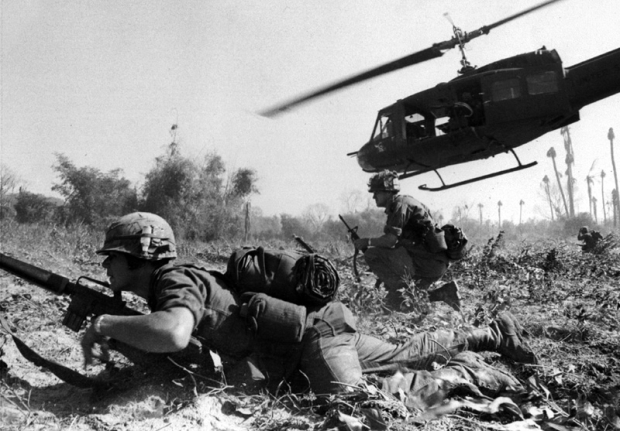“He completed a total of 22 flights”: Rescuing Wounded In the Ia Drang Valley
On Nov. 14, 1965 the Battle of Ia Drang begins, the first major engagement during the Vietnam War, between members of the U.S. Army and the People’s Army of North Vietnam.
The two-part battle took place between November 14 and November 18, 1965 west of Plei Me, in the Central Highlands of South Vietnam. Lt. Col. Hal Moore’s 1st Battalion, 7th Calvary was ordered to take on an air assault in the Ia Drang Valley. Their mission was to find and kill the enemy. At approximately noon, the North Vietnamese 33rd Regiment attacked. The fighting continued all day and into the night.
Col. Bruce Crandall, Commander of Company A, 229th Assault Helicopter Battalion, 1st Cavalry Division (Airmobile), led the first major division operation of airmobile troops into Landing Zone X-Ray.
After several routine lifts into the area, the men on the ground came under attack from the North Vietnamese Army. On his next flight, three soldiers on his helicopter were killed and three were wounded. Crandall kept his helicopter on the ground – in the line of enemy fire, so that four wounded soldiers could be loaded aboard.
After he flew the men back to base, he knew the soldiers on the ground were running short of ammunition, so he decided to fly back in. He asked for a volunteer to go with him and Captain Ed Freeman agreed to pursue it with him, displaying extraordinary heroism.
Together, they flew in supplies, water, and ammunition needed for the troops. His helicopter came under intense enemy fire, but they continued to carry out the wounded, even though that wasn’t their mission.

Combat operations at Ia Drang Valley, Vietnam, November 1965. Major Bruce P. Crandall’s UH-1D helicopter climbs skyward after discharging a load of infantrymen on a search and destroy mission.
Crandall continued to fly into and out of the landing zone throughout the day and into the evening. Throughout the day, he changed helicopters after some were so badly damaged to stay in the air. He spent more than 14 hours in the air and completed a total of 22 flights, most under intense enemy fire. He retired from the battlefield only after all possible service had been rendered to the infantry battalion. Crandall and Freeman successfully rescued some 70 wounded men.

Col. Crandall is awarded the Medal of Honor by President Bush. February, 2007.
“It was the longest day I ever experienced in any aircraft,” Crandall recalled. “The Huey was the best helicopter ever made. We saved so many more people because of that helicopter.”
By the end of the Vietnam War, he had flown over 900 combat missions.
Crandall retired from the Army in 1977. On February 26, 2007, President George W. Bush presented Crandall with the Medal of Honor for his actions in the Ia Drang Valley.







Thank you for your service for a very ungrateful nation at the time. I am glad he finally got the MOH for his actions. I mean, my Lord, how he did it is incredible but the men on the ground were also great. However, he was riding in a huge target